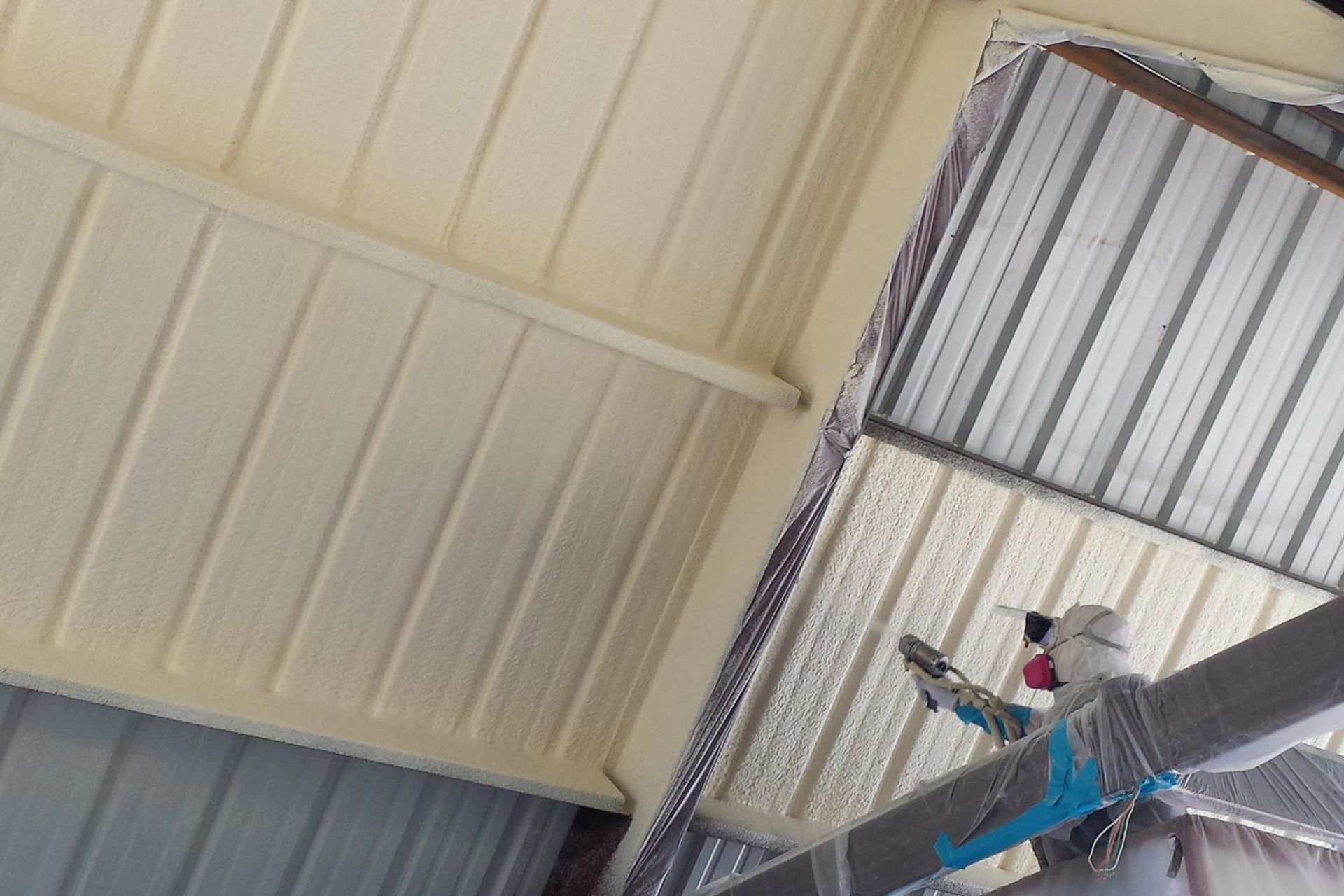
01 Dec Difference Between Open-Cell and Closed-Cell Foam
Spray insulation has become more and more popular over the years. It has a number of advantages over rigid and blown in insulation – its high R-value and ease of application make it great for all kinds of residential and commercial uses. There are, however, two different kinds of spray foam insulation – open-cell and closed-cell.
In this article, the basic differences between the two are covered, in an attempt to help you determine which type of spray foam insulation is best-suited to your needs.
Spray Foam Basics
Both closed-cell and open-cell spray foam are applied in the same way – a nozzle is attached to two tanks, and the foam is sprayed from the nozzle to the areas it’s applied to. From there, the foam begins to expand – open-cell foam expands quite rapidly to many times its original size, while closed-cell foam expands more slowly, and the expansion is minimal.
The “cells” referred to in closed and open-cell foam are the pockets of gas contained within the foam – in open-cell foam, those cells aren’t completely encapsulated, while in closed-cell foam they are. This trapped gas is what makes cell foam insulation so effective.
R-value and Density
One of the key differences between open and closed-cell foams are their R-values (their resistance to thermal transfer, i.e. how insulative an inch of the material is), and density. While open-cell foam has an R-value of around 3.5/inch, the R-value of closed-cell foam is around double at 7/inch.
This is, in part, because of the different densities of the two foams – while open-cell has a density of around .5 per cubic foot, closed-cell foam has about 4x that density.
Now, you might think you’ve found your answer – closed-cell foam is a better insulator, so that’s the way to go! Not so fast. Open-cell foam has some considerable advantages over closed-cell due to its rate of expansion – it’s much easier to use open-cell to cover all of the nooks and crannies in an attic, for example.
What’s more, not every building needs the level of insulation provided by closed-cell foam – mild climates are usually perfectly well-served by lower R-values. That said, those looking to go for a green build (like Passivehaus), might opt for closed-cell, even in mild climates. Finally, it’s important to remember that you might use both open and closed-cell foam in one building – open for the tight and awkward spaces, closed for much of the rest.
Permeability
One of the fundamental principles of insulation (and building in general) is that moisture and vapor always move from high pressure to low pressure. That means permeability is an important element of any insulator. Both open and closed-cell insulation are very resistant to air flow – when used properly, they can create an air seal around much of your building.
Conversely, the two work very differently when it comes to water permeability. Open-cell insulation is quite water permeable, while closed-cell is water impermeable.
Again, you might jump to the conclusion that closed-cell foam is better – water resistance sounds great, right? Consider this question, however: when water falls on a flat roof where does it go? Optimally, it goes through a building’s drainage system, but when the flat roof is in disrepair, the water will leak into a building’s attic.
There, it will encounter your foam insulation. In the case of closed-cell insulation, it will slowly pool around the foam, filling any miniscule gaps it can until eventually, it starts running down walls and into wiring. With open-cell foam, however, it will run directly through the foam, discoloring it and making leaks obvious to the building owner.
For this reason, open-cell foam is commonly used as an insulating material for attics.
Cost
This section will be the simplest: closed-cell insulation costs more than open-cell insulation. In cold climates, the cost difference is well worth it, because heating is the single highest energy cost of most cold climate homes and commercial buildings. That said, if you don’t need high R-value insulation, there’s no reason to spring for closed-cell.
That just about covers the basics of closed and open-cell foam insulation! There are, of course, plenty of corner cases that haven’t been covered here – building sciences are absolutely fascinating, and insulation is one of the most interesting parts. Most consumers, however, should have a pretty good idea at this point about which type of foam insulation will work best for them!
When you’re ready to boost your building’s energy efficiency with spray foam insulation, call the professionals at A-1 Advanced Coating & Foam. We service the entire South Texas region, and would love to help you with your project.


Sorry, the comment form is closed at this time.